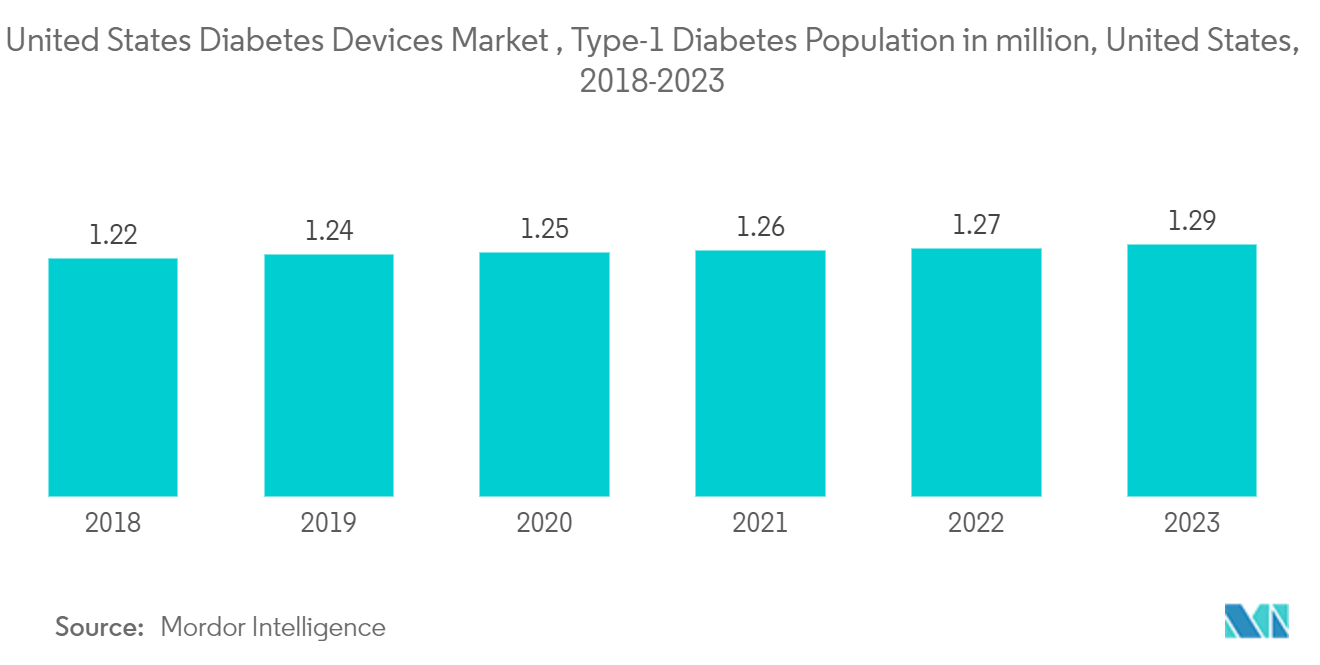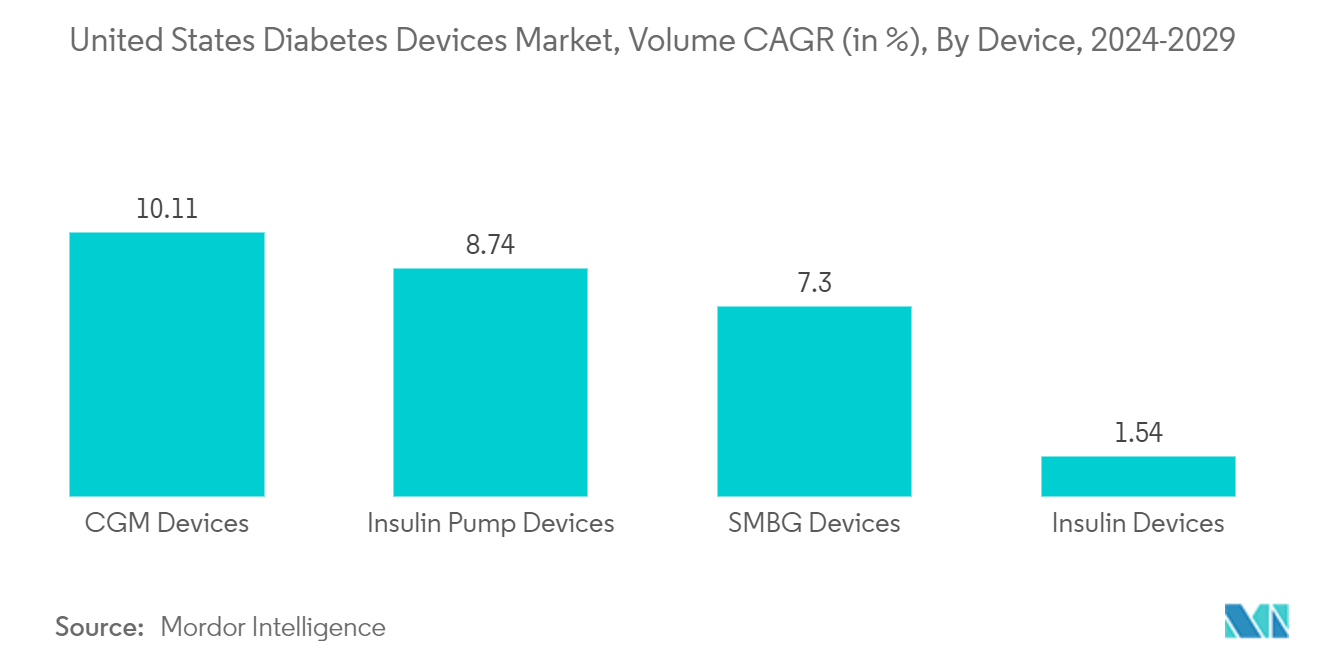Market Trends of United States Diabetes Devices Industry
Growing Diabetes and Obesity Population in the United States
In the United States, the prevalence of diabetes has increased dramatically during the last two decades, a fact driven by the increased prevalence of obesity and lifestyle changes. Diabetes ranks among the fastest-growing chronic diseases in the United States. About 1.75 million US citizens are diagnosed with diabetes every year. The country also has the highest obesity population, which is a prominent cause of type-2 diabetes.
In the United States, several innovations by startups, like Glooko, OneDrop, Verily, Vacate, Insulet, Noom, Bigfoot Biomedical, Virta Health, Diabeloop, and Orgenesis, have launched in the market. The market for diabetes care devices is expected to experience steady growth in the coming years due to the greater prevalence of obesity due to less physical activity, unhealthy food habits, and other lifestyle factors. The growing awareness among people regarding advanced diabetes devices is improving their adaptability to diabetes devices.
Leading manufacturers are focusing on technological innovations and the development of advanced products to gain a substantial share of the market. There has been a significant rise in insulin delivery system technology, ranging from insulin injections to insulin pumps. Technological innovations and advancements offer many conveniences for measuring blood glucose levels.
Therefore, owing to the increasing prevalence of diabetes, the studied market is anticipated to witness growth over the analysis period.

Continuous Glucose Monitoring Segment is Expected to Witness Highest Growth Rate Over the Forecast Period
The continuous glucose monitoring segment recorded more than USD 2 billion in revenue in the current year, which is expected to further increase with a CAGR of more than 9% during the forecast period.
Continuous glucose monitoring sensors use glucose oxidase to detect blood sugar levels. Glucose oxidase converts glucose to hydrogen peroxidase, which reacts with the platinum inside the sensor, producing an electrical signal to be communicated to the transmitter. Sensors are the most important part of continuous glucose monitoring devices. Technological advancements to improve the accuracy of the sensors are expected to drive segment growth during the forecast period.
The frequency of monitoring glucose levels depends on the type of diabetes, which varies from patient to patient. Type-1 diabetic patients need to check their blood glucose levels at regular intervals to monitor their blood glucose levels and adjust their insulin dosing accordingly. The current CGM devices show a detailed representation of blood glucose patterns and tendencies compared to a routine check of glucose levels at set intervals. Furthermore, the current continuous glucose monitoring devices can either retrospectively display the trends in the levels of blood glucose by downloading the data or give a real-time picture of glucose levels through receiver displays.
The use of CGM by type-1 diabetic patients is very low as compared to type-2 diabetic patients. However, type-1 diabetic patients spend nearly twice as much on these devices as type-2 diabetics do. The newest CGM models, the Abbott Freestyle Libre and the Dexcom G6, overcame many technical barriers. However, people with type-2 diabetes have not used CGM as widely as they might due to their high costs and uncertainties regarding their necessity and efficacy.
Moreover, to lower the cost burden of diabetic patients in the United States, Abbott introduced a new, lower-priced category with Libre, at around USD 75 to USD 150 each month (2 sensors that last 14 days each). Continuous glucose monitoring devices are becoming cheaper with the advent of new technologies like cell phone integration, which is likely to drive segment growth during the forecast period.

